Unused flat roof, Underground concrete, cold bonding, with ballast
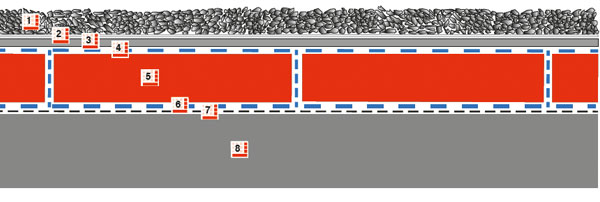
- for example: Gravel
- Separation and protection layer
- High polymer seal
- GLAPOR k-2k cold bonding mass
- GLAPOR foam glass boards
- GLAPOR k-2k cold bonding mass
- Bitumen primer
- Concrete ceiling
Description of the application
The GLAPOR flat roof is a compact and under flow secured bonded flat roof construction.
The thermal insulation is installed free of thermal bridges using GLAPOR k-2k cold adhesive on the substructure.
The sealing system conforms to the legal and normative regulations for the respective intended use.
The minimum roo fpitch of the flat construction of 2.0% should be respected. The GLAPOR gradient system with different slopes is available.
To avoid concentrated drainage GLAPOR roof riders are available in different versions.
Planning notes / Execution notes
A vapor barrier is not required when using GLAPOR cellular glass insulation because GLAPOR cellular glass boards are vapor-tight.
The underground should be level, gem. DIN 18 202, designed to be load bearing and dry and free from residues (oil, grease, etc).
10 kN / m² can be assumed without proof for the wind resistance of fully glued roof systems with GLAPOR foam glass and GLAPOR flex hot bitumen.
Fire protection “Hard roofing” according to DIN 4102-7 – Cellular glass panels belong to building material class A1. The thermal insulation is not flammable. For the component “roof”, the state building regulations require, in addition to the classification in a building material class (A1) usually a so-called “hard roofing”. This is to ensure that the roof structures are resistant to spreading fire and radiant heat. For the manufacturers of waterproofing systems, these tests with the different seals are available.
Installation instructions
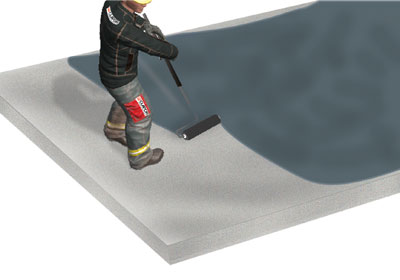
Prepare concrete surface or mineral substrate with bitumen primer.
Consumption approx. 150 g / m²
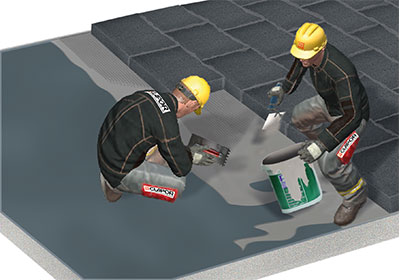
Distribute GLAPOR cold bitumen adhesive on the prepared concrete pavement.
Consumption depending on the substrate 3.5 - 4.5 kg / m²
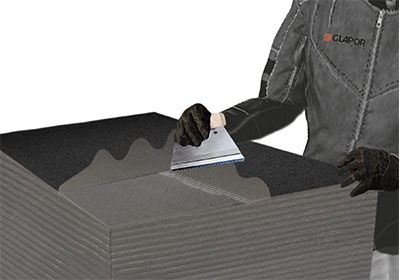
Coat GLAPOR cellular glass boards in the stack on two side surfaces with cold bitumen adhesive with a toothed spatula / tooth trowel.
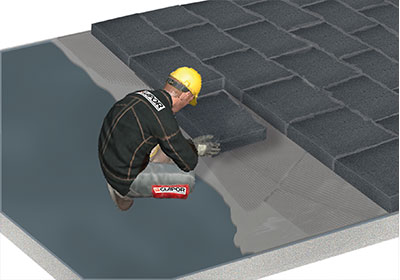
Install GLAPOR foam glass panels in mitre. Insert diagonally with the adhesive coated sides of the GLAPOR foam glass plates in front.
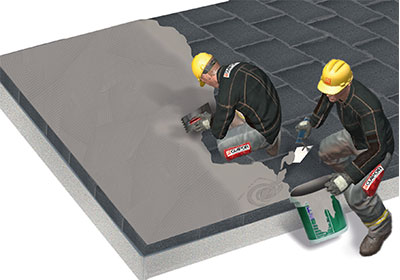
Apply a cell-filling, full-surface top coat with cold bitumen adhesive.
Consumption approx. 2kg / m²
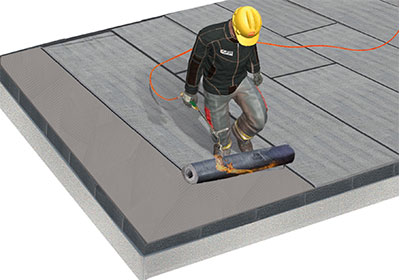
Weld the entire surface of the waterproofing bituminous membrane on the top coat of cold bitumen adhesive.
Note: Welding of the waterproofing membranes directly on the cellular glass boards - without top coat - is not possible!
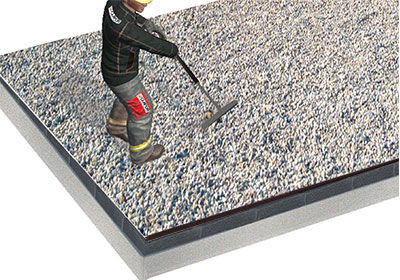
Then distribution of gravel.


